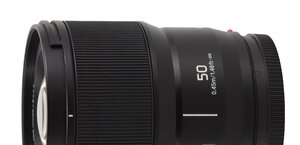Sigma A 12-24 mm f/4 DG HSM
5. Chromatic and spherical aberration
Chromatic aberration
The Sigma A 12–24 mm f/4 DG HSM practically doesn’t have any problems concerning the longitudinal chromatic aberration. A very slight colouring of images is visible only by f/4.0 but on stopping down that effect disappears completely.
 |
Please Support UsIf you enjoy our reviews and articles, and you want us to continue our work please, support our website by donating through PayPal. The funds are going to be used for paying our editorial team, renting servers, and equipping our testing studio; only that way we will be able to continue providing you interesting content for free. |
- - - - - - - - - - - - - - - - - - - - - - - - - - - - - - - - - - - - - - - - - - - - - - - -
Let’s check the situation of the lateral chromatic aberration – its performance on the edge of the APS-C/DX sensor and on the edge of full frame present graphs below.


The highest levels of that aberration, reaching near 0.08%, are seen at the maximum relative aperture and the shortest focal length. With such extreme parameters of the tested lens it is a sensational level. The more expensive Canon 11-24 mm and the previous model of the Sigma 12-24 mm could momentarily exceed 0.2% so had serious problems in this category. The new Sigma has no problems at all – a round of applause!
| Canon 5D III, 12 mm, f/4.0 | Canon 5D III, 24 mm, f/16.0 |

|

|
Shperical aberration
Significant depth of field provided by the tested Sigma made our basic tests concerning spherical aberration difficult. Despite that fact, when you examine the first photo of this chapter, you can notice a slight shift of the focal area toward bigger distances after passing from f/4.0 to f/5.6.
Defocused circles of light, presented below, show noticeable differences even though their size is not big. The first one features lighter centre and the centre of the second one is darker. It is one of the classic symptoms of spherical aberration.
| Canon 5D III, 24 mm, f/4.0, in front of | Canon 5D III, 24 mm, f/4.0, behind |

|

|
The aberration described in this chapter can be admired at its best only when you start to analyze MTFs. The graph below shows the resolution at 24 mm we got by using two methods. Red dots repeat the situation from the previous chapter: they show the best values at every aperture chosen from several dozen photos taken in both, automatic and manual focus modes. Blue dots are a result of a different approach. We tried to find the best position of the focus by f/4.0 using the manual mode and then without changing the focus we just stopped down the aperture.

There is a huge discrepancy between these graphs and it stems from bad correction of spherical aberration.
It’s also worth mentioning that aberration is the most bothersome at 24 mm. At 18 mm it becomes negligible and at 12 mm it is already imperceptible.






